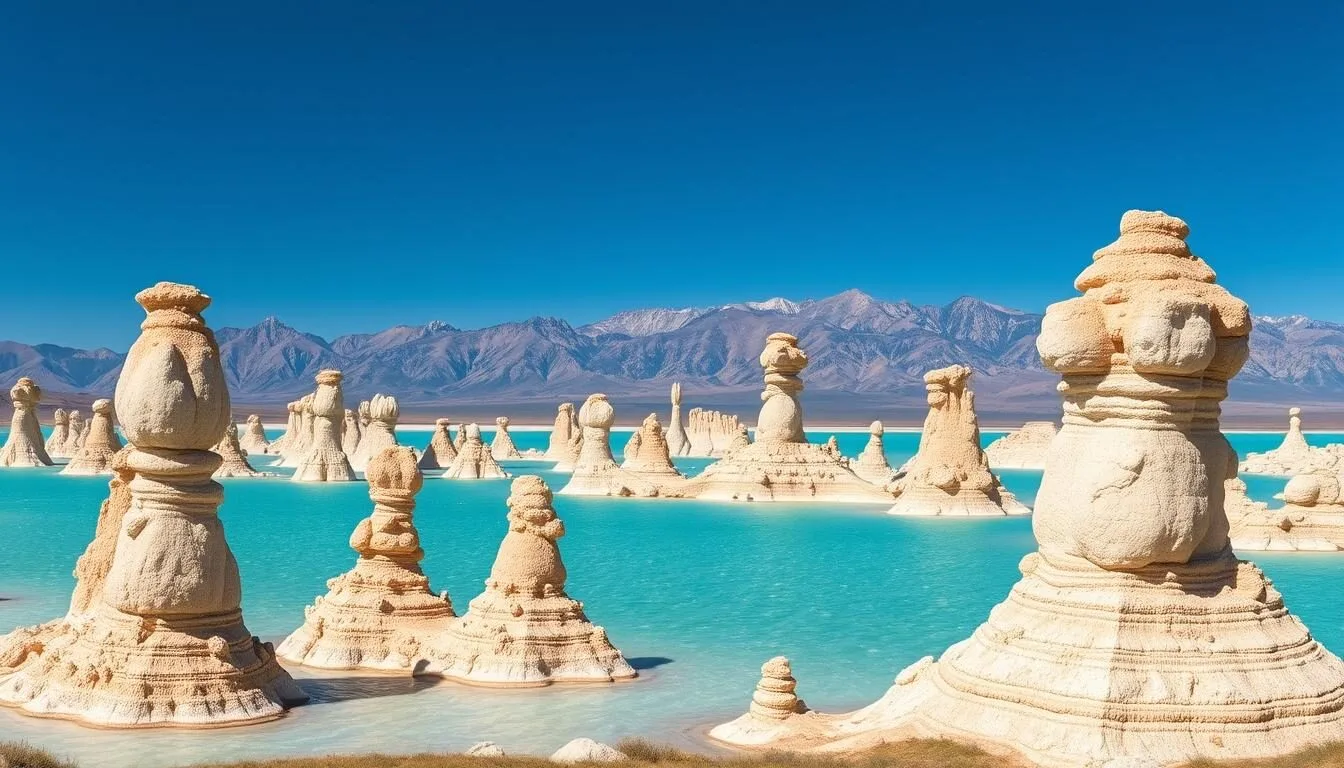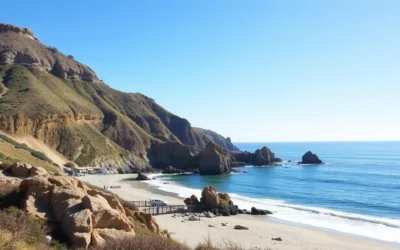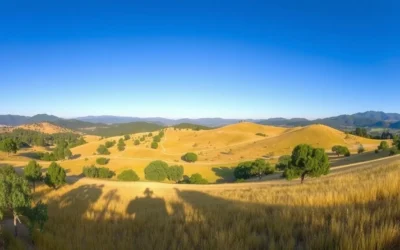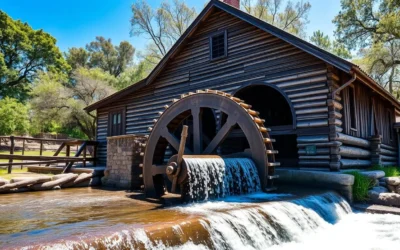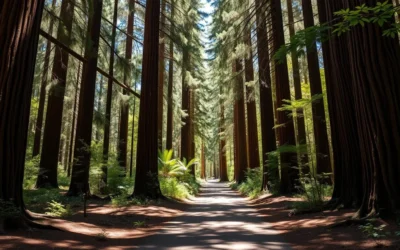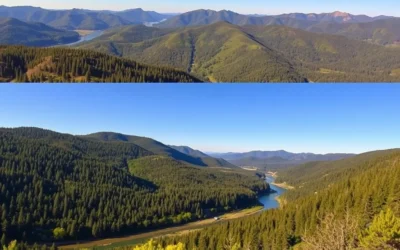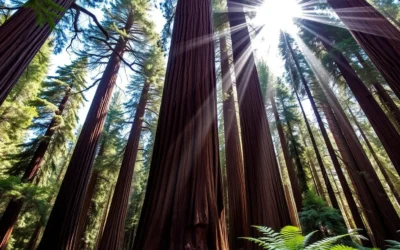✓ Accommodations✓ Flights✓ Rental Cars
Did you know that Mono Lake, often called “Big Lake” by locals, is over 700,000 years old, making it one of North America’s oldest lakes? This ancient body of water is also 2.5 times saltier than the ocean, creating a unique ecosystem where trillions of brine shrimp thrive and millions of migratory birds feed. Located in the stunning Eastern Sierra region of California, this remarkable natural wonder offers visitors an otherworldly landscape unlike anywhere else in the state.
What Makes Mono Lake Special
At first glance, the 65-square-mile Mono Lake appears to be like any other large body of water. But a closer look reveals an extraordinary ecosystem that has fascinated scientists and visitors for generations. The lake’s most distinctive features are the limestone tufa towers that rise dramatically from the water’s surface, formed when underwater springs rich in calcium mix with the lake’s alkaline waters.
This surreal landscape provides habitat for an incredible array of wildlife. The lake supports trillions of tiny brine shrimp and alkali flies, which in turn feed hundreds of thousands of migratory birds. Majestic ospreys nest atop tufa towers, while the surrounding shoreline offers glimpses of coyotes, mule deer, and numerous small mammals.
Ready to Explore Mono Lake?
Start planning your trip to this natural wonder with these travel essentials.
Getting to Mono Lake
Mono Lake is located just off U.S. Highway 395 in the Eastern Sierra region of California, approximately 13 miles east of Yosemite National Park. The lake is easily accessible by car, making it a perfect stop on a California road trip.
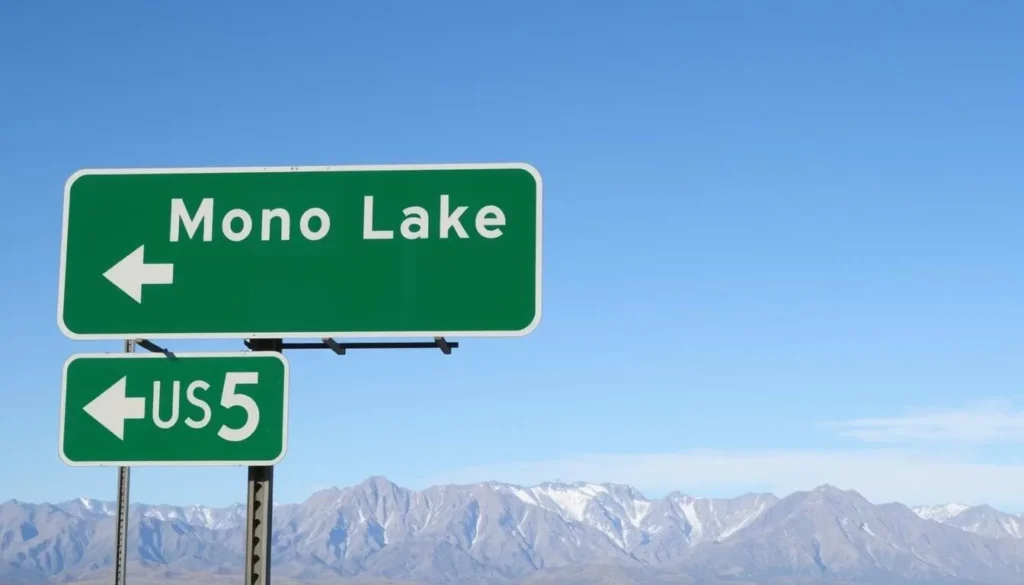
By Car
From Mammoth Lakes: Drive north on Highway 395 for approximately 30 minutes (28 miles) to reach the town of Lee Vining and Mono Lake.
From Reno, Nevada: Head south on Highway 395 for about 2.5 hours (140 miles).
From San Francisco: Travel east on Highway 120 through Yosemite National Park (summer only) or take Highway 80 to Highway 395 (year-round route).
Nearest Airports
The closest commercial airport is Mammoth Yosemite Airport (MMH), located about 30 miles south of Mono Lake. Reno-Tahoe International Airport (RNO) is approximately 140 miles north and offers more flight options.
Need Transportation?
Rent a car to explore Mono Lake and the surrounding Eastern Sierra at your own pace.
Best Time to Visit Mono Lake
Each season offers a different experience at Mono Lake, though summer and fall are generally considered the most pleasant times to visit.
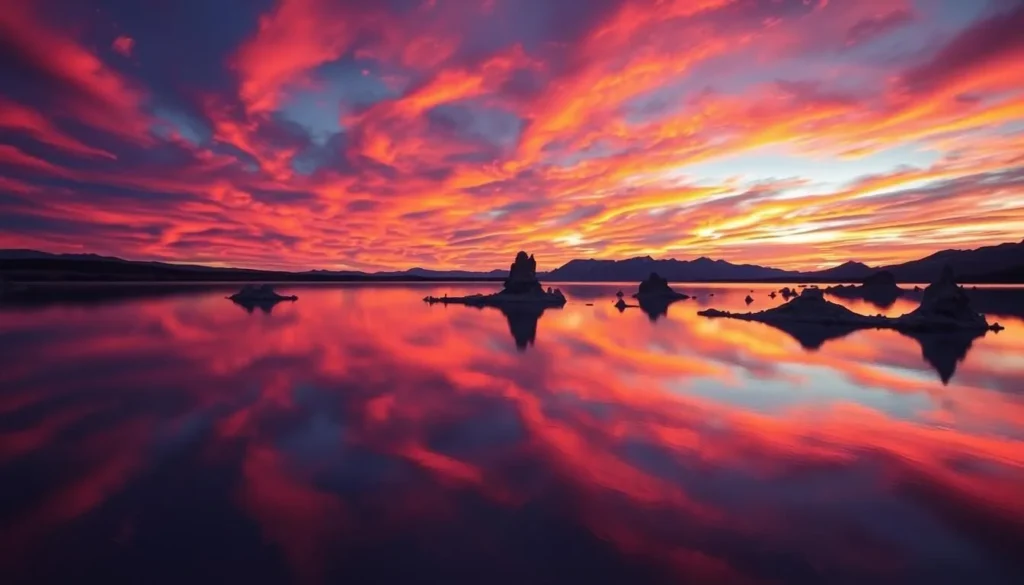
Summer (June-August)
Peak season with warm days (75-85°F) and cool nights (45-55°F). Perfect for swimming, kayaking, and hiking. Expect more visitors, especially on weekends.
Fall (September-October)
Spectacular season with fewer crowds, pleasant temperatures (65-75°F during day), and beautiful golden aspen trees in the surrounding mountains. Bird migration peaks in late summer and early fall.
Winter (November-March)
Cold temperatures (20-40°F) with possible snow. The landscape transforms with snow-capped mountains reflecting in the lake. Many services are limited, but photography opportunities are exceptional.
Spring (April-May)
Gradually warming temperatures (50-65°F) with wildflowers beginning to bloom. Spring runoff increases water levels, and migratory birds begin returning to the lake.
Top Things to Do at Mono Lake
From exploring otherworldly tufa formations to bird watching and water activities, Mono Lake offers unique experiences for nature lovers, photographers, and outdoor enthusiasts.
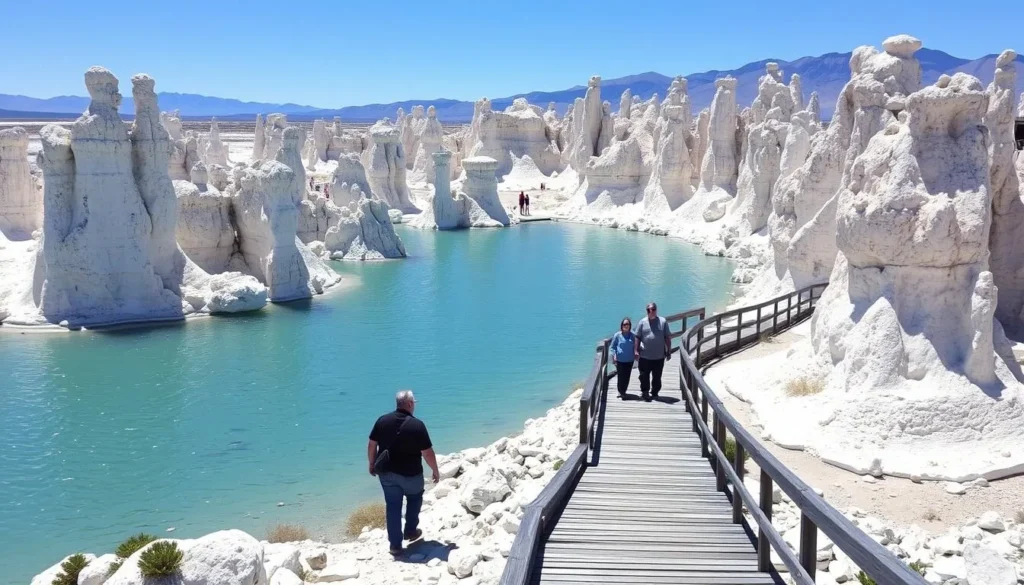
1. South Tufa Reserve
The South Tufa area offers the most impressive collection of tufa towers and is the most popular spot for visitors. A self-guided trail with interpretive signs explains the natural and cultural history of the lake. The 1-mile loop trail is suitable for all ages and abilities.
Sunrise and sunset are particularly magical times to visit, as the changing light creates dramatic shadows and colors on the tufa formations. Photographers from around the world come to capture these otherworldly scenes.
“The tufa towers at South Tufa are like natural sculptures rising from the water—they create one of the most unique landscapes I’ve ever photographed.”
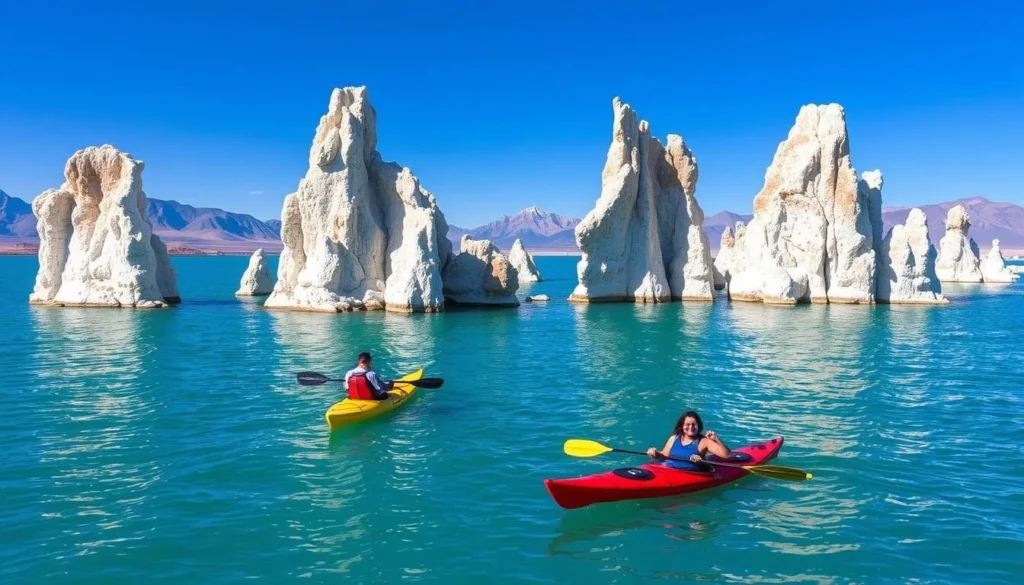
2. Kayaking and Canoeing
One of the most memorable ways to experience Mono Lake is from the water. Paddling among the tufa towers gives you a unique perspective on these natural formations. The lake’s high salt content makes it exceptionally buoyant, creating a distinctive paddling experience.
Several local outfitters offer guided kayak tours and equipment rentals. Navy Beach is the most popular launch point for kayakers. Morning trips are recommended when the water is typically calmer.
Experience Mono Lake by Kayak
Book a guided kayak tour to explore the tufa towers up close.
Book a Tour
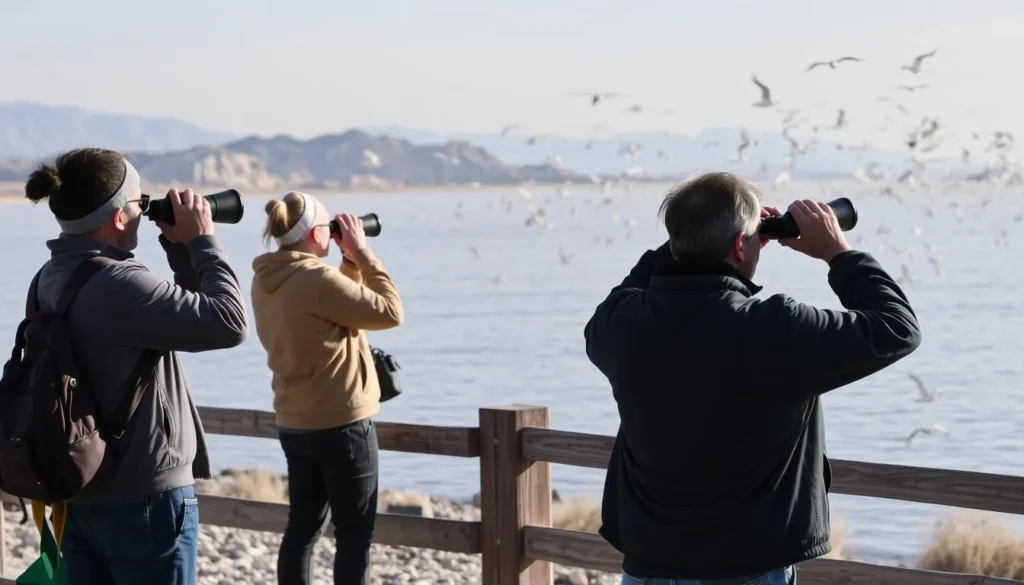
3. Bird Watching
Mono Lake is a globally significant bird habitat, serving as a crucial feeding stop for nearly 2 million migratory birds annually. The lake’s abundant brine shrimp and alkali flies provide essential nutrition for birds traveling along the Pacific Flyway.
Over 300 bird species have been documented at Mono Lake, including California gulls, eared grebes, Wilson’s phalaropes, and osprey. Late summer and early fall are peak times for bird watching when hundreds of thousands of phalaropes and grebes gather to feed before continuing their migration.
The best bird watching locations include County Park, Navy Beach, and the boardwalk at South Tufa. Bring binoculars and check the bird sighting board at the Mono Basin Visitor Center for recent observations.
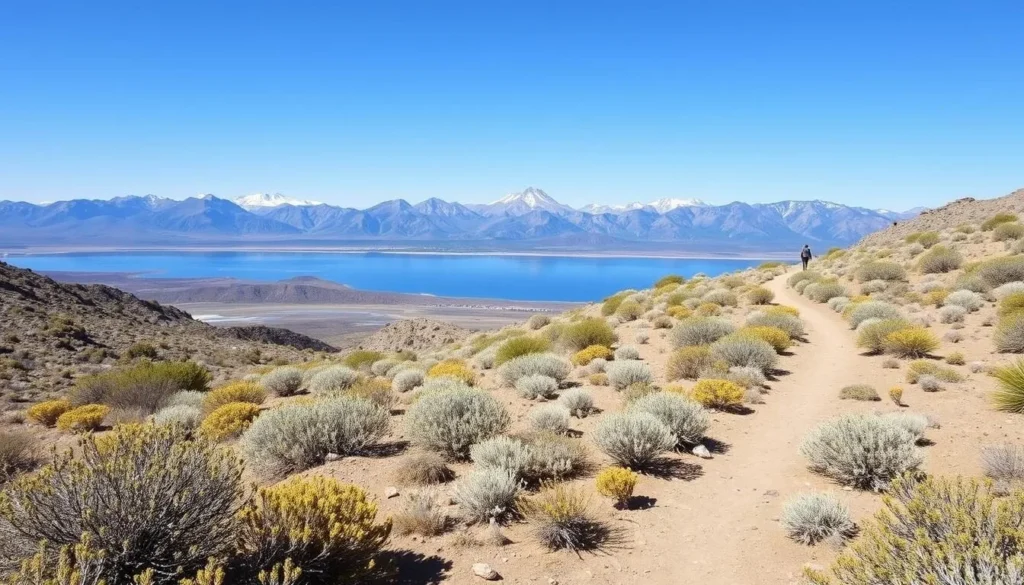
4. Hiking Trails
Several hiking trails around Mono Lake offer spectacular views and opportunities to explore the diverse ecosystem:
- Panum Crater Trail: A 1-mile loop trail exploring a volcanic crater with obsidian formations and panoramic views of Mono Lake.
- Mono Lake Trail: A gentle 0.8-mile interpretive trail starting from the Mono Basin Visitor Center.
- Lundy Canyon Trail: A moderate 4-mile (round trip) trail with waterfalls, aspen groves, and wildflowers (best in spring and fall).
- Parker Lake Trail: A 3.6-mile (round trip) trail leading to a beautiful alpine lake with views of Mono Lake from higher elevation.
Mono Basin Visitor Center
Before exploring the lake, stop at the Mono Basin National Forest Scenic Area Visitor Center located just north of Lee Vining on Highway 395. This modern facility provides an excellent introduction to the lake’s ecology, geology, and cultural history.

The visitor center features:
- Interactive exhibits explaining the lake’s unique ecosystem
- A relief map of the Mono Basin
- Daily bird sighting board updated by rangers
- Bookstore with field guides and local literature
- Knowledgeable rangers who can answer questions and provide recommendations
- Short interpretive trail leading to the lake
The visitor center is typically open from 8:00 AM to 5:00 PM daily during summer (June-September) with reduced hours in spring and fall. It’s closed during winter except for weekends.
Visitor Tip: Ask rangers about current conditions and special programs like guided walks, bird watching tours, and evening presentations that may be available during your visit.
Nearby Attractions
While Mono Lake is the star attraction, the surrounding Mono County offers several other fascinating destinations worth exploring.

Bodie State Historic Park
Located about 20 miles northeast of Mono Lake, Bodie is the largest unrestored ghost town in the West. Once a booming gold mining town with 10,000 residents in the 1880s, Bodie is now preserved in a state of “arrested decay” with about 200 buildings still standing.
Walking the dusty streets of Bodie offers a fascinating glimpse into California’s gold rush era. You can peer into buildings where furniture, goods, and personal items remain as they were left decades ago. The park is open year-round, though winter access may require snowshoes or cross-country skis.
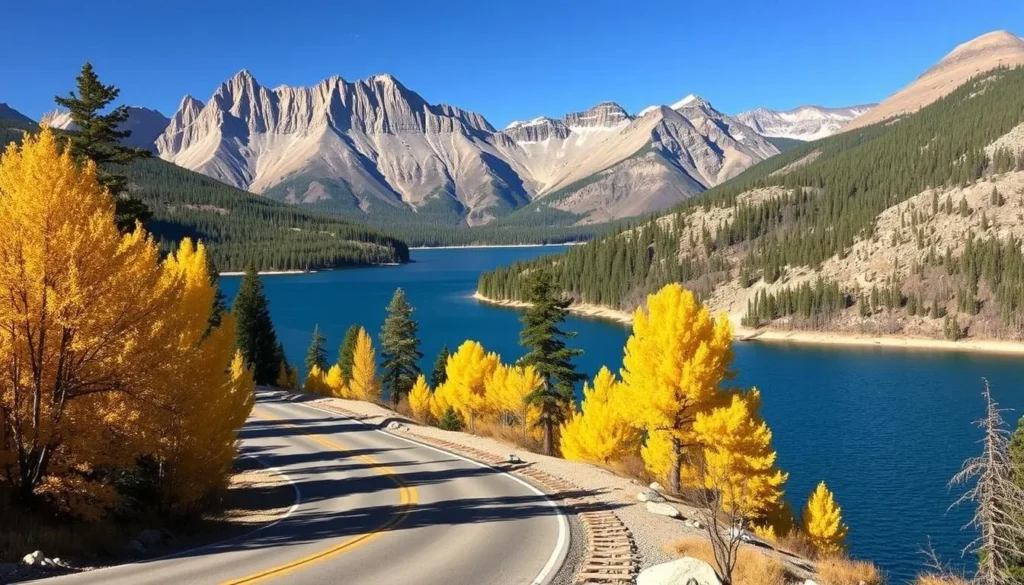
June Lake Loop
Just 15 miles south of Mono Lake, the June Lake Loop (Highway 158) is a scenic 16-mile drive that circles four stunning alpine lakes: Grant Lake, Silver Lake, Gull Lake, and June Lake. This picturesque area is often called the “Switzerland of California” for its dramatic mountain scenery.
The loop offers excellent fishing, hiking, boating, and swimming in summer, while winter brings opportunities for skiing at June Mountain. Fall is particularly spectacular when aspen trees turn brilliant gold and orange. Several restaurants, shops, and accommodations are available in the small town of June Lake.
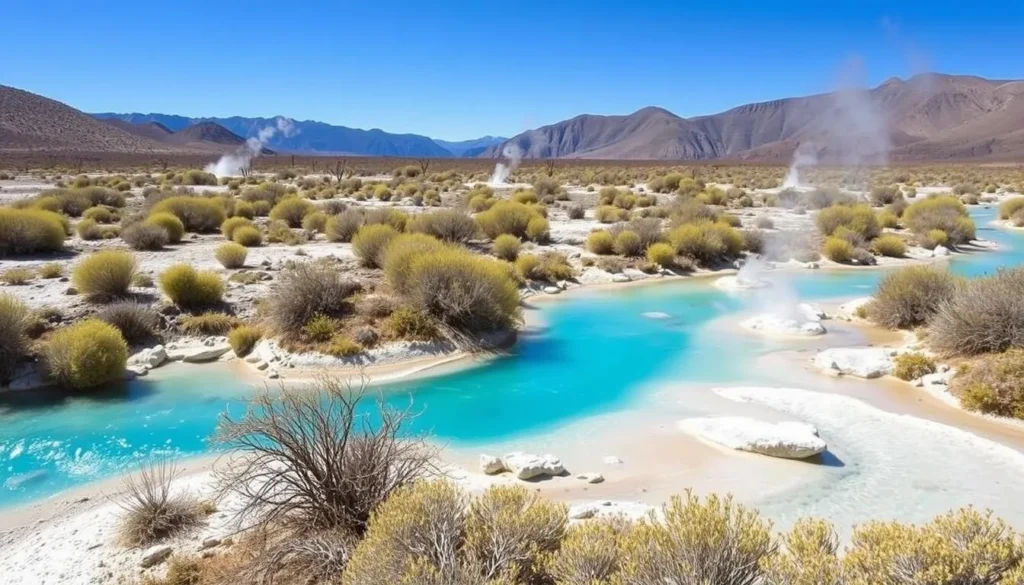
Hot Creek Geological Site
Located about 30 minutes south of Mono Lake near Mammoth Lakes, Hot Creek is a fascinating geothermal area where boiling water emerges from underground springs. The vivid turquoise waters and steaming vents create an otherworldly landscape reminiscent of Yellowstone.
While swimming is prohibited due to unpredictable water temperatures and dangerous conditions, visitors can enjoy the spectacular views from designated observation areas. The site is particularly beautiful at sunrise and sunset when the steam is more visible against the colorful sky.
Explore More of Mono County
Book your accommodations now to experience all that this beautiful region has to offer.
Where to Stay Near Mono Lake
While there are no accommodations directly on Mono Lake’s shores, several options are available in nearby communities.
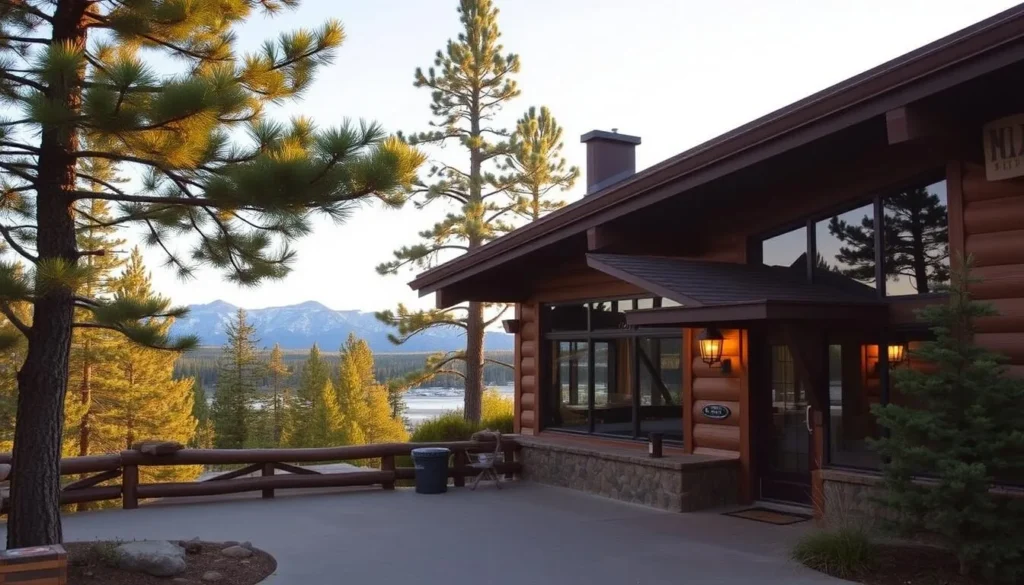
Lee Vining
The closest town to Mono Lake, Lee Vining offers several motels, inns, and restaurants. Staying here provides convenient access to the lake and visitor center.
- Lake View Lodge: Clean, comfortable rooms with mountain views
- Murphey’s Motel: Family-owned motel with reasonable rates
- El Mono Motel: Charming motel with a coffee shop and garden
June Lake
About 20 minutes south of Mono Lake, the June Lake area offers more upscale accommodations in a beautiful alpine setting.
- Double Eagle Resort and Spa: Luxury cabins and lodge rooms with a full-service spa
- June Lake Motel: Lakeside accommodations with kitchenettes
- Boulder Lodge: Rustic cabins with lake views
Mammoth Lakes
Located 30 minutes south of Mono Lake, Mammoth Lakes is a major resort town with numerous lodging options, restaurants, and services.
- The Village Lodge: Upscale condos in the heart of Mammoth Village
- Tamarack Lodge: Historic lodge with cabins on Twin Lakes
- Sierra Nevada Resort: Recently renovated hotel with multiple dining options
Camping
Several campgrounds are available near Mono Lake for those who prefer to sleep under the stars:
- Mono Vista RV Park: Full hookups in Lee Vining
- Lundy Canyon Campground: Scenic forest service campground with creek access
- June Lake Campgrounds: Multiple options around the June Lake Loop
- Oh Ridge Campground: Popular campground with lake views
Booking Tip: Accommodations fill quickly during summer and fall weekends. Make reservations well in advance, especially if visiting during peak season (July-September).
Where to Eat
The Eastern Sierra region offers several unique dining experiences, from casual cafes to fine dining restaurants.
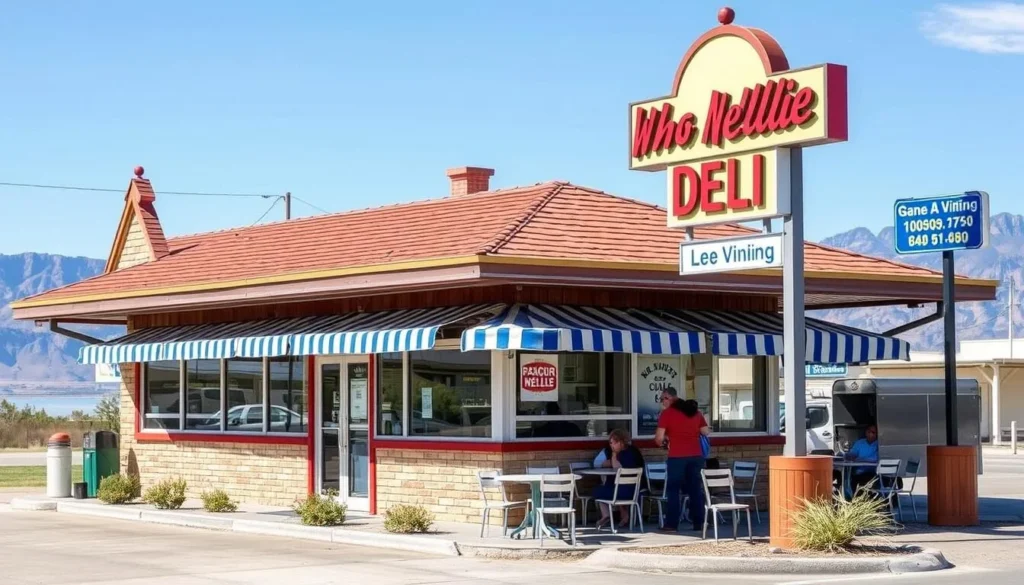
Lee Vining
This small town offers several good dining options:
- Whoa Nellie Deli: Located inside the Mobil gas station at the junction of Highways 395 and 120, this unexpected culinary gem serves gourmet meals including famous fish tacos and wild buffalo meatloaf. Enjoy outdoor seating with spectacular views of Mono Lake.
- Mono Cone: A classic roadside stand serving burgers, fries, and soft-serve ice cream since 1947. A must-visit for a nostalgic treat.
- Nicely’s Restaurant: Traditional diner serving hearty breakfasts and American classics.
- Epic Cafe: Coffee shop with sandwiches, pastries, and excellent espresso drinks.
June Lake
The June Lake Loop offers additional dining options:
- Tiger Bar & Cafe: Historic establishment serving burgers, steaks, and local beers.
- Eagle’s Landing Restaurant: Fine dining at Double Eagle Resort with a focus on seasonal ingredients.
- June Lake Brewing: Craft brewery with rotating food trucks and outdoor seating.
Local Tip: Many restaurants in the area close during the off-season or have limited hours. Always check current operating hours, especially if visiting in spring or fall.
Practical Tips for Visiting Mono Lake
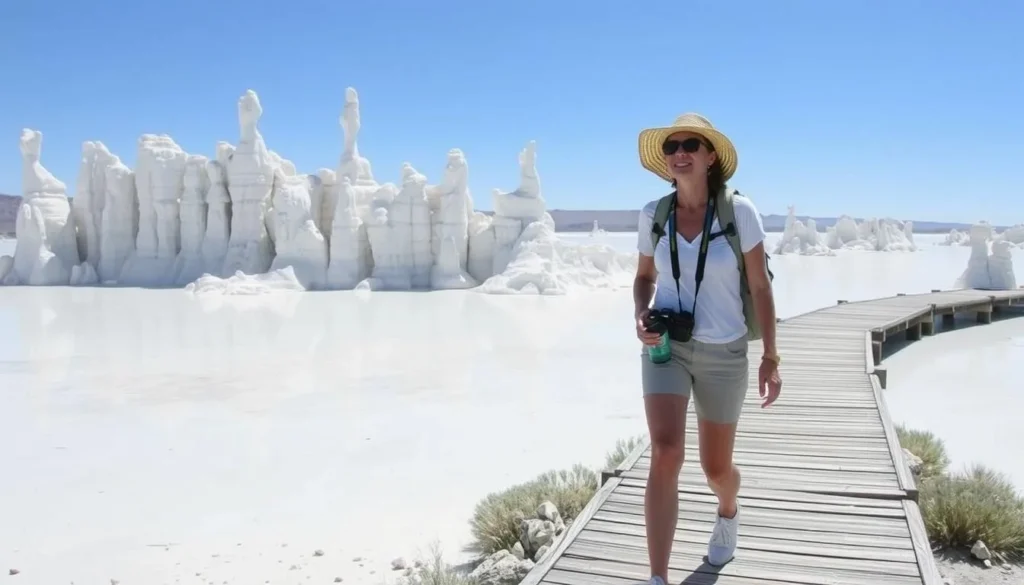
Weather and What to Pack
The Mono Basin experiences extreme temperature fluctuations due to its high elevation (6,378 feet) and desert climate:
- Sun protection: The high-altitude sun is intense year-round. Bring sunscreen, sunglasses, and a wide-brimmed hat.
- Layers: Even in summer, mornings and evenings can be cool. Pack layers that can be added or removed as temperatures change.
- Footwear: Comfortable walking shoes with good traction for exploring tufa areas and trails.
- Water: Bring plenty of drinking water, as the dry climate can cause rapid dehydration.
- Camera: The unique landscape offers exceptional photography opportunities.
- Binoculars: Essential for bird watching and wildlife viewing.
Permits and Fees
Access to Mono Lake’s South Tufa area requires a fee ($3 per person, children under 16 free). America the Beautiful passes are accepted. Some areas, like County Park, offer free access to the lake.
Kayaking and canoeing do not require special permits, but commercial tour operators must be licensed.
Conservation and Etiquette
Mono Lake is a fragile ecosystem that has faced environmental challenges. Please follow these guidelines to help preserve this natural wonder:
- Stay on designated trails and boardwalks to protect delicate vegetation and prevent erosion.
- Do not climb on or break pieces off tufa formations (they’re protected by law).
- Pack out all trash and follow Leave No Trace principles.
- Keep a respectful distance from wildlife, especially nesting birds.
- Dogs must be leashed at all times and are not allowed on some trails.
- Swimming is permitted, but avoid areas with dense bird or brine shrimp populations.
Did You Know? Mono Lake faced a serious environmental threat when Los Angeles began diverting its tributary streams in 1941. After decades of activism, a landmark court decision in 1994 helped protect the lake. Today, the Mono Lake Committee continues to advocate for the lake’s conservation.
Experience the Magic of Mono Lake
Mono Lake is more than just a scenic stop along Highway 395—it’s a living laboratory of geological wonders, ecological diversity, and natural beauty. From the otherworldly tufa formations to the vibrant bird life and surrounding mountain scenery, this ancient lake offers experiences that can’t be found anywhere else in California.
Whether you’re kayaking among limestone towers at sunrise, photographing the golden light of sunset reflecting off the water’s surface, or simply sitting quietly observing the rich tapestry of wildlife, Mono Lake has a way of leaving visitors with a profound appreciation for the natural world.
As you plan your visit to this remarkable destination, remember that Mono Lake is not just a place to see but a place to experience with all your senses. Take your time, explore thoughtfully, and allow yourself to be transformed by the timeless beauty of one of California’s most extraordinary natural wonders.
Ready for Your Mono Lake Adventure?
Start planning your trip to experience the natural wonders of Mono County, California.
—
The above is subject to change.
Check back often to TRAVEL.COM for the latest travel tips and deals.
